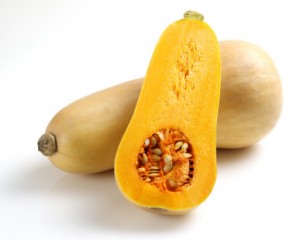 If you’ve been to the produce section of your local grocery store lately, you’ve probably spotted the influx of winter squash. Until recently, I never knew what to do with these foods.
If you’ve been to the produce section of your local grocery store lately, you’ve probably spotted the influx of winter squash. Until recently, I never knew what to do with these foods.
When I was young, my grandmother made fresh pumpkin and butternut squash pies each fall, but I never paid much attention to how the squash got from point A to point B. I simply thought they magically transformed into pie inside her oven.
Some winter squash you may easily recognize – like pumpkin – and others you may not. If you haven’t included squash in your meals, it’s time to give it a shot.
Why winter squash?
Winter squash is full of fiber and carotenoids – phytochemicals that may reduce cancer risk. What’s the giveaway of their carotenoid content? The bright orange color on the inside usually means a food is rich in these powerful nutrients!
Not sure where to begin?
Winter squash can be intimidating. Tough outer skins, seeds and pulp – what do you do with all of this stuff?
For starters, try something familiar. Pumpkin and butternut squash are probably names you know. These are flavorful, sweet squashes (unlike light-flavored summer squashes) and are easy to find at your local roadside market or grocery.
Once you gather the courage to start, use these tips for success:
Now that you have the actual edible food, what should you make? Check out the recipes below for starters.
Do you have a favorite winter squash recipe? Share it with us!